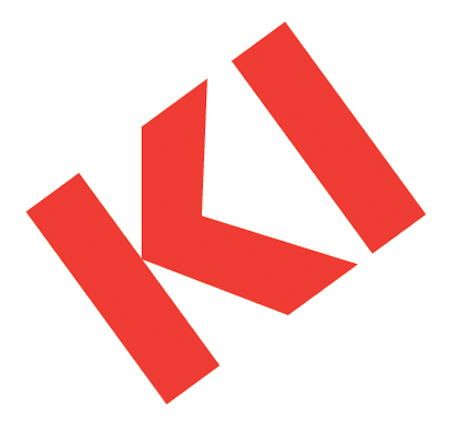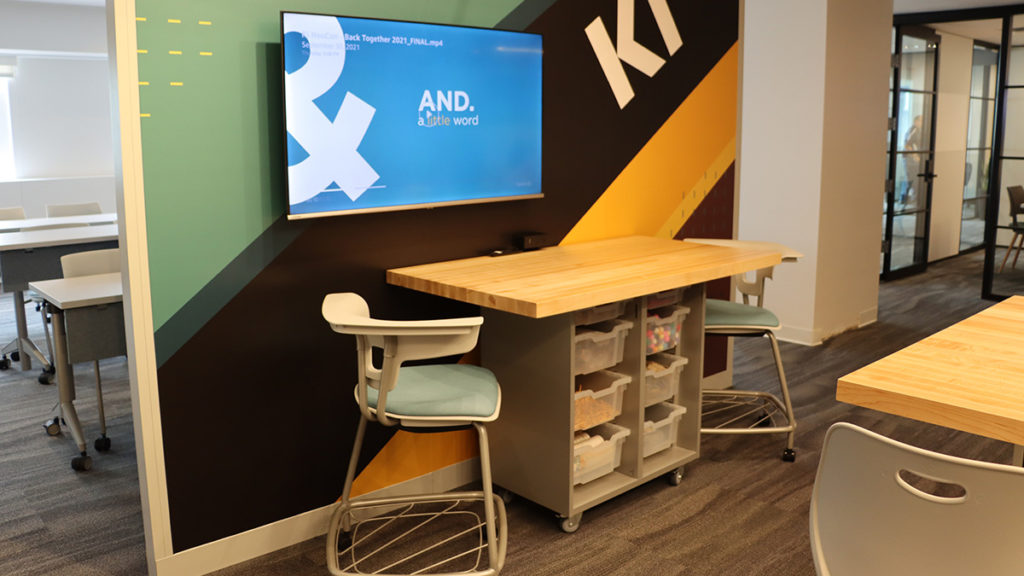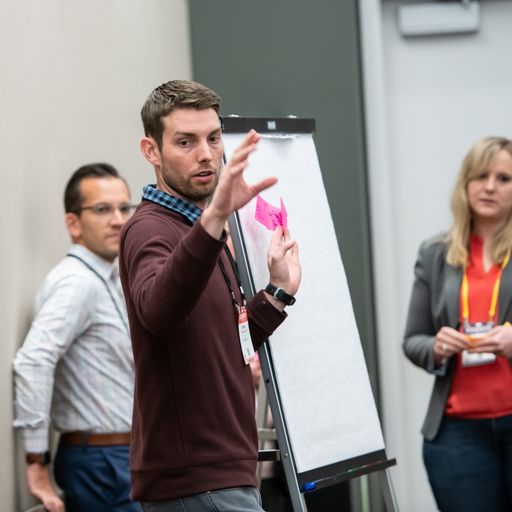
When was KI founded and how?
It all started in 1941 with the familiar metal folding chair … an iconic product that represents KI’s foundation of simple, durable design. The chair also symbolizes our ability to understand the needs of our end-users – schools and churches at the time – and help them make smart choices. Yet our foundation goes beyond specific products. It rests on important decisions we made that moved us closer to our customers and helped make us one of the fastest-growing furniture manufacturers in the country. Today, you can find our furniture in K-12 schools and across college campuses throughout the United States.
What makes your company unique?

KI’s approach to the market is that of practiced partnerships with clients, dealers and designers. This approach takes form in several ways, starting with direct dialogue, research, and support to end-user clients. We also have open-line accessibility to all dealers and behind-the-scenes aide to the design community via in-person product sampling, space planning and design services such as assistance with fabric/finish selections. Product design and development occurs within our internal teams with direct user-feedback at its center. Education environments in and around our Green Bay headquarters are where the true “magic” happens as we observe students’ explicit and latent needs to inform the solutions we develop. The design and manufacturing occurs within the USA where true, skilled labor creates the quality that sets KI apart.
What do you like best about the educational products industry?
The industry desires to learn from each stakeholder within it. As a former school administrator, I initially thought that a “tradeshow” was just something a vendor wanted me to attend so they could “sell me” stuff. After visiting my first show in that role, I learned that these associations and their gatherings were a great resource of information, innovation and inspiration. Since joining the other side of the table, I have found support and guidance comes from my competition, clients and the broader design and dealer community. This competitive, but healthy, industry builds off itself for the betterment of our schools thus students’ educational outcomes.

What are you most proud of?
Aside from my family, what brings me joy and pride is being a part of STEM from Dance (SFD). SFD is a non-profit based in NYC that harnesses the power of dance to expose young female students of underrepresented communities to the STEM fields. This is done through a seamless marriage of the performing arts with engineering, coding and more. I joined the SFD board in 2014 and have been board chair for the past five years as we have quadrupled in size and reach. This year marks our 10-year anniversary, and we have an ambitious global goal for the next 10.
How had EDmarket helped your business?
KI has been a proud member of EDmarket for more than 25 years now. In my short five years with KI, I have seen the synergies of the two organizations grow exponentially. EDmarket’s ability to balance student, educator, designer, dealer and vendor needs into a safe space allows each stakeholder to come away with new insights and dreams without feeling “sold” or “having to sell.” This is the case whether through EDmarket’s weekly newsletter, monthly publication, webinars or EDspaces itself, which is no small feat. EDmarket’s ability to do it and continuously improve upon it is priceless.

How has the pandemic changed the educational marketplace?
The two canned responses are: accelerated online learning and revealed the value of educators. I believe, however, both initial “changes” were mostly fleeting. The acceleration of online learning will hold in Higher Ed to a degree, but less in K-12. Parents who had their children at home for 6-18 months for online school better appreciate the daily challenges teachers face, but appreciation alone is not changing teacher compensation or retention rates. What I do believe has changed more than anything is clientele’s understanding of the manufacturing processes and supply chains. Whether suffering extended lead times in 2020 or 2021 for a home sofa, or for a school district’s updated classroom standard, there is a deeper understanding and curiosity of what it truly takes to build and deliver those chairs, desks, etc. for schools nationwide. This has brought more fruitful and deeper discussions between KI clients and me, and I believe yields better long-term results for all involved.
Helping connect the dots for administrators as well as dealers and designers who are beginning, or looking to strengthen, their practices would be a huge advantage to EDmarket and the broader educational landscape.
How has your company adapted?
KI manufacturing has always occurred within North America, with 90%+ of that occurring within our US manufacturing plants. So, while certain raw materials and small components caused initial issues, our re-shoring and inventory plans have been updated to keep us ahead of the curve. Like the rest of the industry, certain price increases and surcharges were put in place over the past two years to ensure the quality our customers expect from KI is still met. We’re hopeful to ratchet down surcharges when gasoline and other leading cost factors subside.

What do you see as the most important role EDmarket can play in the market?
Connect the dots. Again, as a young school administrator, I was often building the plane as I flew it. Helping connect the dots for administrators as well as dealers and designers who are beginning, or looking to strengthen, their practices would be a huge advantage to EDmarket and the broader educational landscape.
What are your top goals to accomplish as a new member of the Board?
My goal is to help EDmarket bridge the gap in providing intentional trainings and accreditations to professionals that need it within the marketplace. I believe my blend of manufacturing and school administration experience provides me a point of view applicable to making that happen.
I find the energy and enthusiasm many of the industry’s stakeholders have can bubble over into constant talking without as much active listening.
What would you like to see EDmarket champion?
The roadmap of accredited courses for school administrators and/or educators is my first pick here. I believe EDmarket is best suited to handle this first. However, the next and most crucial element the industry is missing is bringing students into the mix. I don’t know explicitly what that means now, but having students be part of solution evaluations, and possibly solution design and development, would really allow EDmarket (and all stakeholders) to practice what we preach: “Students first.”
What one piece of advice would you give others in our industry?
Listen. I find the energy and enthusiasm many of the industry’s stakeholders have can bubble over into constant talking without as much active listening. This is a not a shot across anyone’s bow as it comes from a good place, and I’m as guilty as anyone, but I find the most growth personally and professionally when I stop and listen more than I speak. It is especially true when meeting with school administration, students, dealer partners or even my competition.

